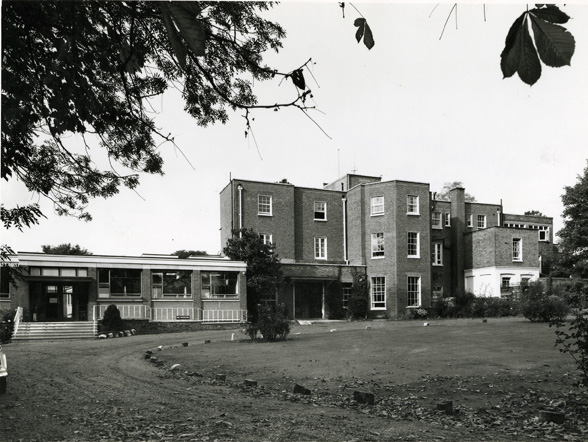Halliwick School For Girls, Winchmore Hill
Halliwick School For Girls, Winchmore HillWinchmore Hill, London (1927 - 1984) Halliwick Home was transferred to the Society in 1927, having been established by Miss Caroline Blunt in 1851 as The Cripples and Industrial School. The Home was first set up in Marylebone Road, where it remained for 60 years until 1911 when the Home was relocated to Winchmore Hill, London, a 300-year-old building. The Home was certified as a Special School for disabled girls and was dedicated by the Bishop of London on 20 October 1927. At the Home's opening 56 girls were accommodated, aged 8-16. The residents went to school though later would be taught dressmaking, embroidery and needlework. In 1929 a Chapel was opened at the Home and by 1933 the Home accommodated 60 to 70 girls all of whom would attend school until they were 16. Those who were able to do needlework would then be sent to Continuation School to learn fine needlework and dressmaking. After school had finished girls who were able would play rounders and netball and the younger children would have marching drill, Guides or Brownies. The Winchmore Guide Company was the first Disabled Guide Company to be formed. In 1939 the Home was evacuated to Halliwick Home for Girls, Chipping Ongar, Essex and in 1940 to Halliwick Home for Girls, Torquay, Devon. The building was reopened after the Second World War in 1945. In 1950 the Home needed extensive rebuilding after dry rot and woodworm affected its structure. A new chapel was opened in 1963 and in 1970 the School playground was equipped with suitably adapted play activities for children with disabilities. Plans to establish accommodation for young people up to 18 years old were first proposed in 1973 and the school started taking boys as well as girls as a first step towards this goal. By 1976 building work had begun on the new Education Unit which would provide educational training for young people with physical and mental disabilities. The aim was to give young people greater independence and make the transition from education to employment as easy as possible. The addition of a kitchen, dining room, hygiene unit and workshop were important in giving residents practical experience of every day tasks such as cooking and washing. The Halliwick Penguins Swimming Club was an important feature of life at the School. In the 1970s residents were taught how to maintain their own balance and move through the water, and if they were able, the girls would eventually move onto diving and swimming underwater. The classes gave residents a sense of 'mobility...normality and equality with others'. By 1978 there were six students living in the Further Education Unit and following its teaching programme. In around 1981 the residents moved from the old building into small community houses. In 1984 the Invalid Children's Aid Association took over the Project at the request of the Society. |




